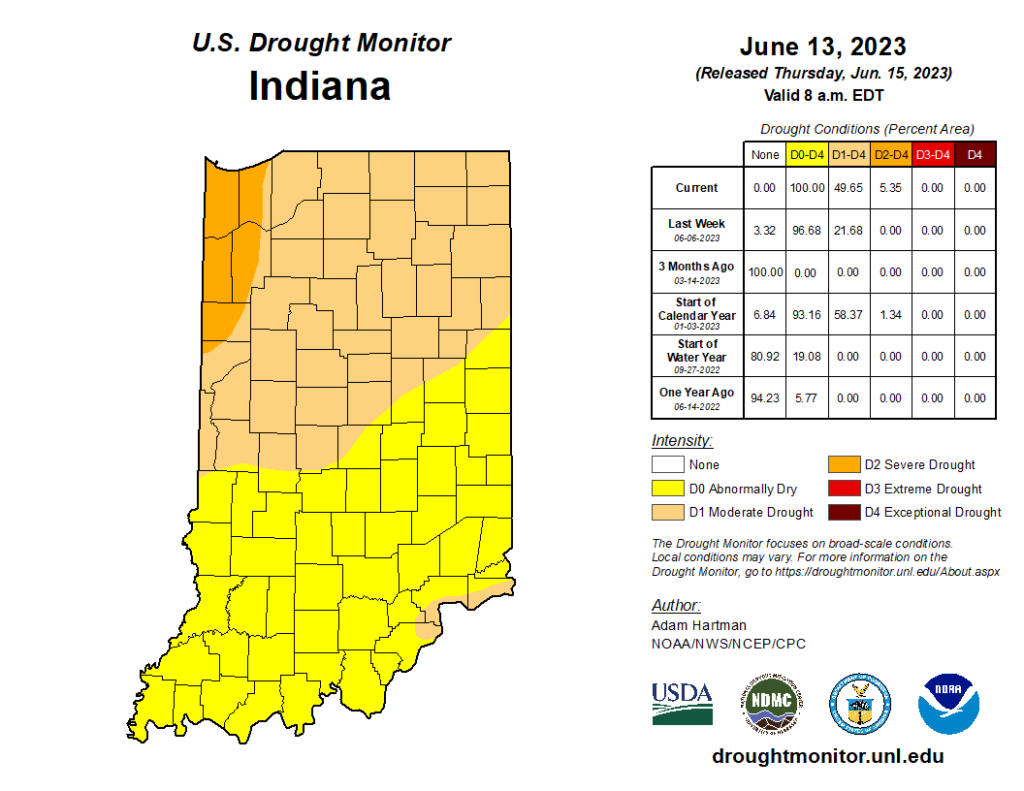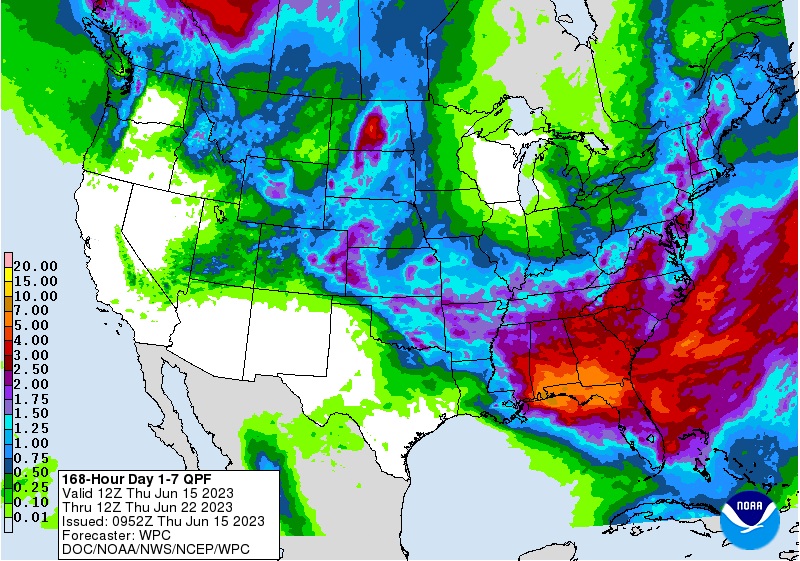After several weeks of little-to-no rain, Indiana welcomed some much-needed precipitation over the last several days. While amounts ranged from 1-to-3 inches (except for a few counties in west-northwest Indiana (see Figure 1)), the state is still several inches from recovering from the deficit and relieving most impacts. The U.S. Drought Monitor this week (based upon data through the morning of Tuesday, June 13th) now has all of Indiana in some category of abnormal dryness or drought (Figure 2). The driest location is northwestern Indiana where severe drought (D2) is impacting several counties. Most of northern and some central Indiana counties are in moderate drought (D1) with southern Indiana Abnormally Dry (D0). After the additional precipitation that fell on June 13th along with what is forecasted (Figure 3) through next Thursday, Jun 22nd, there is a strong probability that drought will not worsen for much of the southern half of the state. Northern counties risk further drought impacts, particular as temperatures return to normal and above-normal levels. Vegetation may show brief signs of improvement, but hydrological indicators may take longer and need more precipitation to fully recover.
Climate outlooks continue to favor near-normal precipitation across much of the state with northwestern Indiana showing weak probabilities favoring below-normal amounts over the next 2 weeks. Above-normal temperatures are also favored which will increase evapotranspiration rates and continue to cause a water balance deficit. While this is relatively normal this time of year, we are still trying to recover from the lack of precipitation prior to this past week, so some timely, above-normal precipitation would be preferred.
Speaking of temperatures, most of Indiana has had slightly below normal (1-4 degrees) temperatures over the past several weeks that have been nice and helped minimize some moisture loss. We should start seeing those temperatures return to more seasonal, if not above-normal values so keep an eye on water resources and soil moisture when you can. The Indiana State Climate Office manages a mesonet (network of high-quality weather stations; https://ag.purdue.edu/indiana-state-climate/purdue-mesonet/purdue-mesonet-data-hub/) across the state that includes soil moisture and soil temperature sensors at 2-inch, 4-inch, 8-inch, and 20-inch depths. Monitoring those values could be a useful indicator for irrigation and other watering management planning.
Figures 4 and 5 show the latest modified accumulated growing degree-day maps and departure from average, respectively. These maps represent accumulations since April 15th and indicate most of Indiana is slightly behind the climatological average for this time of year.

Figure 2. U.S. Drought Monitor for Indiana as of June 13, 2022. Source: https://droughtmonitor.unl.edu/CurrentMap/StateDroughtMonitor.aspx?IN

Figure 5. Modified growing degree day (50°F / 86°F) accumulation from April 15-June 13, 2023, represented as the departure from the 1991-2020 climatological average.





